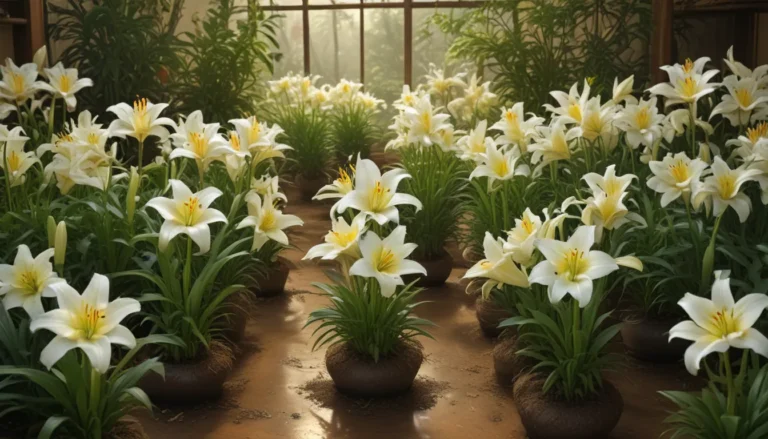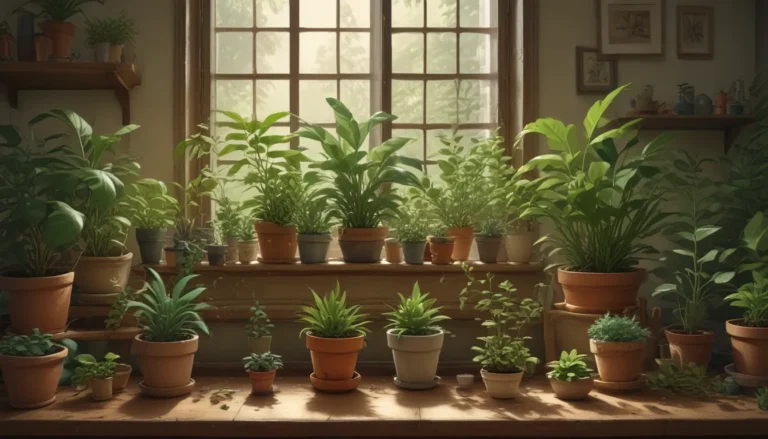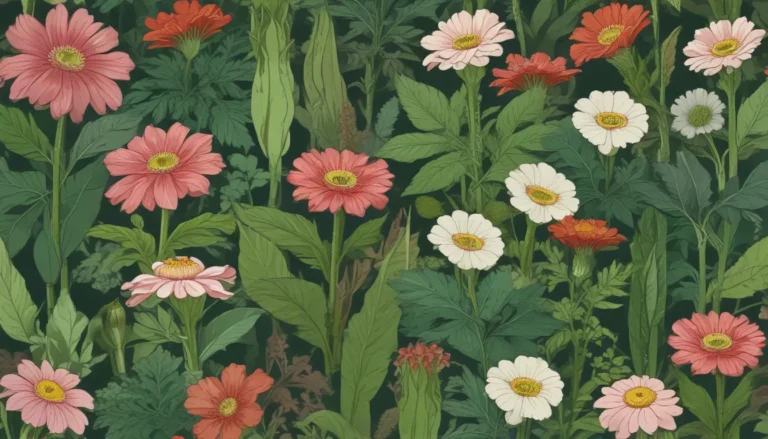Everything You Need to Know About Growing and Caring for Balloon Flowers

Are you looking to add a pop of color and whimsy to your garden? Look no further than the delightful balloon flower, Platycodon grandiflorus. This unique plant, native to the Russian Far East, China, Japan, and Korea, has captured the hearts of gardeners across the United States.
In this comprehensive guide, we will explore everything you need to know about growing and caring for balloon flowers in your landscape. From propagation to pruning, we’ve got you covered!
What Are Balloon Flowers?
Balloon flowers, also known as common, Chinese, or Japanese bellflowers, are herbaceous perennials that add a touch of charm to any garden. With their balloon-like buds that burst open into starry bell-like blossoms, these plants are a true delight to behold.
Perfect for sunny border gardens, balloon flowers thrive in USDA Hardiness Zones 3 to 8. They come in various shades of blue, pink, and white, with some boasting intricate veining on their petals. The leaves are thick and lance-shaped, adding to the plant’s appeal.
Not only are balloon flowers visually stunning, but they also have a rich history of culinary and medicinal uses. From pickled roots to herbal remedies, these plants offer a plethora of benefits beyond their beauty.
Balloon Flower Propagation
When it comes to propagating balloon flowers, you have several options to choose from. Whether you prefer starting from seed, using stem cuttings, or opting for nursery starts, there’s a method for every gardener.
-
From Seed: Start seeds indoors before the last spring frost for blooms in the first year. Light is essential for germination, so be sure to place the seeds on the surface of moist soil.
-
From Nursery Starts: Transplant nursery starts in early spring for immediate flowers, or at any time during the growing season for blooms in the second year.
-
From Cuttings: Take soft cuttings in spring, root them, and plant them out for new plants. Ensure proper moisture and avoid overwatering during the rooting process.
How to Grow Balloon Flowers
To ensure the success of your balloon flowers, here are some essential growing tips to keep in mind:
- Sunlight: Balloon flowers thrive in full sun to part shade locations.
- Soil: Plant them in organically-rich, loamy soil with good drainage.
- Watering: Provide consistent moisture without oversaturation.
- Fertilization: While optional, you may use slow-release fertilizer for added nutrients.
- Mulching: Use mulch to retain moisture and prevent weed growth.
- Container Gardening: Opt for dwarf varieties in containers with proper drainage.
With these simple guidelines, you can enjoy a thriving display of balloon flowers in your garden.
Pruning and Maintenance
While balloon flowers are relatively low-maintenance, there are a few considerations to keep in mind:
- Leggy Stems: To encourage upright growth, prune stems by half in late spring and remove dead stems in fall or early spring.
- Self-Sowing: Manage self-sowing by deadheading spent blooms and removing random seedlings.
- Fertilizer: Apply slow-release fertilizer sparingly to avoid legginess.
- Moisture: Established plants have deep taproots, requiring minimal supplemental watering.
By addressing these maintenance tasks, you can keep your balloon flowers looking their best year after year.
Balloon Flower Cultivars to Select
When choosing balloon flower cultivars, you have a range of options to suit your preferences:
- Astra Double: A compact dwarf variety with double lavender-blue flowers.
- Rose: A delicate pink cultivar suitable for borders and containers.
- Fuji Blue: A taller variety with deep blue petals and potential double blooms.
- Sentimental: A dwarf option with vivid blue flowers ideal for border edging.
Each cultivar offers its unique charm, making it easy to find the perfect match for your garden.
Managing Pests and Disease
While balloon flowers are generally resilient to pests and disease, proper care is crucial to maintain their health:
- Avoid Wet Conditions: Prevent issues like root rot by ensuring adequate drainage.
- Monitor Watering: Water deeply but infrequently to avoid waterlogged conditions.
By following these guidelines, you can keep your balloon flowers thriving without the hassle of pest and disease problems.
Best Uses of Balloon Flowers
The versatility of balloon flowers makes them an excellent choice for a variety of garden settings:
- Mixed Beds: Add a unique touch to mixed beds with their vibrant blooms.
- Borders: Use dwarf varieties for border edging to create a colorful display.
- Containers: Plant dwarf cultivars in containers for a portable pop of color.
- Perennial Beds: Medium-sized varieties work well in perennial beds for long-lasting beauty.
Pair them with companion plants that share similar water requirements for a harmonious garden layout.
Quick Reference Growing Guide
Here’s a quick reference guide to help you grow and care for your balloon flowers:
- Plant Type: Herbaceous perennial
- Flower/Foliage Color: Blue shades, pink, and white/green to blue-green
- Native to: Asia, Russia
- Hardiness (USDA Zone): 3-8
- Soil Type: Organically-rich loam
- Bloom Time/Season: Summer
- Exposure: Full sun to part shade
- Spacing: 4-18 inches
- Height: 4-36 inches
- Spread: 4-18 inches
- Water Needs: Moderate
- Maintenance: Low
Refer to this guide for all the essential information you need to grow healthy and vibrant balloon flowers in your garden.
Plucky and Playful
With their whimsical blooms and sturdy nature, balloon flowers are a delightful addition to any garden. From their unique appearance to their easy propagation and maintenance, these plants are sure to bring joy to your outdoor space.
So, will you be planting balloon flowers in your garden this year? Share your thoughts in the comments below and let us know how you plan to incorporate these charming plants into your landscape. Don’t forget to share a picture of your blooming balloon flowers!
Add a playful touch to your garden with the vibrant hues of balloon flowers and enjoy a season full of beauty and whimsy.
By following these tips and guidelines, you can cultivate a stunning display of balloon flowers in your garden and enjoy their beauty year after year. Whether you’re a seasoned gardener or new to the world of horticulture, these versatile plants are sure to delight with their unique charm and easy-care nature.
So, roll up your sleeves, grab your gardening tools, and get ready to transform your outdoor space with the playful beauty of balloon flowers. Happy gardening!
Remember, persistence and patience are key when growing balloon flowers. With the right care and attention, you’ll be rewarded with a garden full of colorful blossoms that will bring joy to your heart and soul.
Let Your Garden Bloom with Balloon Flowers
Enhance your garden with the whimsical beauty of balloon flowers and watch as your outdoor space transforms into a vibrant oasis of color and charm. With their unique appearance, easy propagation, and low-maintenance nature, these plants are a wonderful addition to any landscape.
So, whether you’re a seasoned gardener looking to add a touch of whimsy to your garden or a novice eager to explore the world of horticulture, balloon flowers are sure to captivate your heart and imagination. Get ready to let your garden bloom with the playful beauty of balloon flowers and enjoy a season filled with joy, wonder, and natural beauty. Happy gardening!





